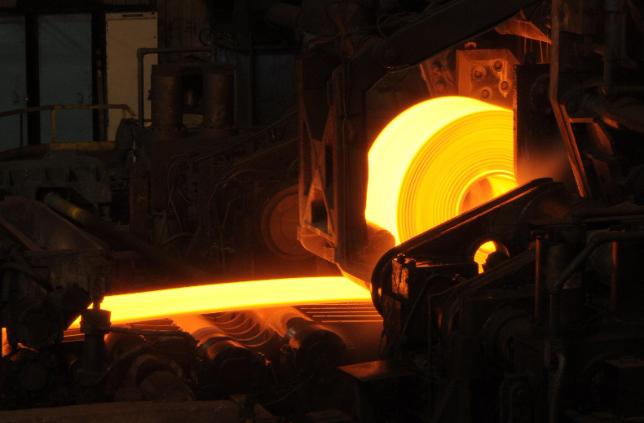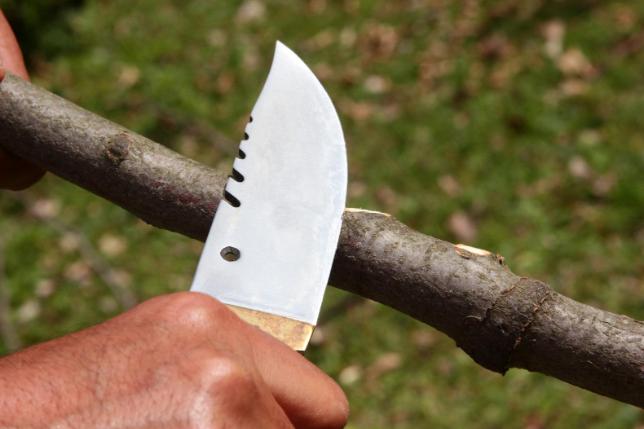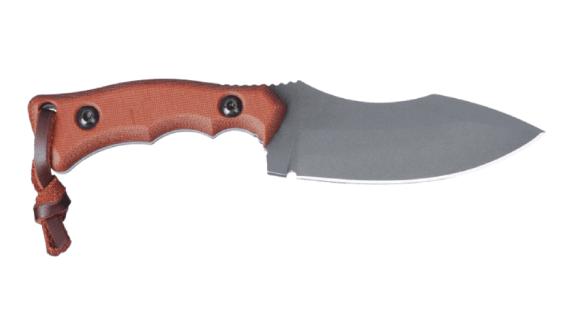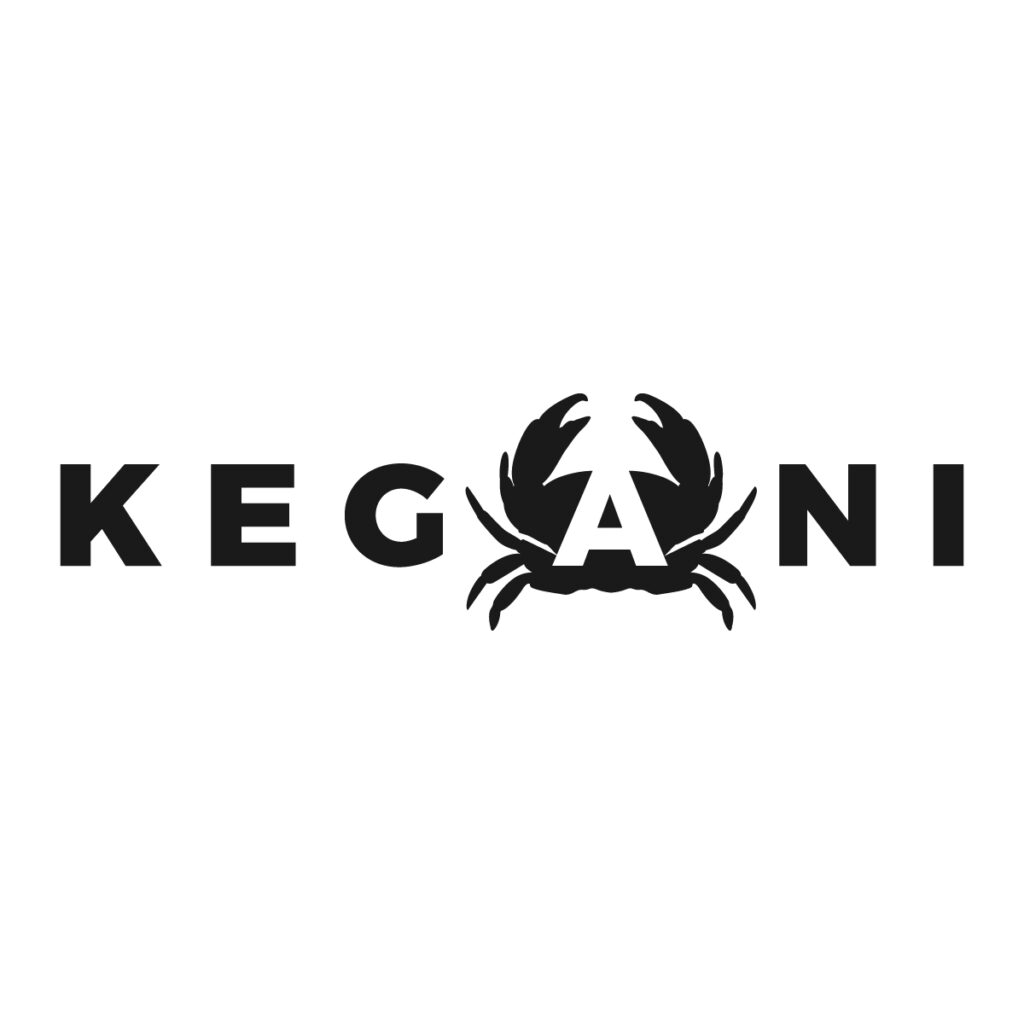Thinking about using 1095 steel for your blades? There’s a reason this traditional carbon steel continues to stand the test of time in a market dominated by modern super steels.
This guide covers everything you need to know about 1095 steel, including its composition, properties, pros and cons, and best use cases — so you can make the right choice for your knife line or personal projects.
What is 1095 steel?

1095 steel is a carbon steel named after its carbon content — approximately 0.95% to 1.05% by weight. With a carbon content higher than 0.6%, it falls into the high-carbon steel category, known for its hardness and edge retention.
The “10” in 1095 indicates that it’s part of the plain carbon steel family, primarily composed of iron (Fe) and carbon (C) without significant alloying elements.
Though newer steels may outperform it in toughness or edge retention, 1095 has been time-tested since WWII—a go-to material for traditional knives because it’s reliable, easy to work with, and cost-effective.
Chemical composition of 1095 steel
Understanding the precise chemical makeup of 1095 is key to understanding its performance:
| Element | Percentage (%) |
|---|---|
| Iron (Fe) | 98.4 – 98.8 |
| Carbon (C) | 0.90 – 1.03 |
| Manganese (Mn) | 0.30 – 0.50 |
| Sulfur (S) | ≤ 0.050 |
| Phosphorus (P) | ≤ 0.040 |
- Carbon (C): The core component. With 0.95%–1.05% carbon, 1095 steel achieves high hardness and excellent edge retention. Higher carbon content translates to sharper, more durable blades.
- Manganese (Mn): At 0.50%, manganese enhances hardness, wear resistance, and impact durability—ideal for outdoor knives built for rugged use.
- Phosphorus & Sulfur: Present in trace amounts (≤0.05% and ≤0.04%, respectively), these are considered impurities that can affect steel performance.
Thanks to its simple composition, 1095 steel is straightforward to heat-treat. However, even slight variations in the carbon and manganese content of steel can impact your knife’s performance and consistency. That’s why you need to partner with suppliers who maintain tight tolerances, ensuring your knives perform reliably every time.
Why is 1095 steel so popular?

1. For knife makers & manufacturers
- Cost-efficiency: 1095 is budget-friendly compared to modern steels.
- Easy to work with: Low alloy content means it’s easier on cutting tools and faster to grind than modern super steels like ZDP-189.
Check out our complete list of OEM Knife Manufacturers if you’re seeking a production partner.
2. For end users
- Exceptional Edge Sharpness: With minimal alloying elements, 1095 steel has a fine grain structure, allowing it to form razor-sharp, smooth edges without serrations.
- Ease of Sharpening in Heavy Use: Unlike stainless steels and super steels that resist sharpening, 1095 can often be restored using a basic river stone, perfect for survival scenarios.
Even the most wear-resistant steel needs sharpening after heavy use. But with 1095, the process is quick and doesn’t require sophisticated gear.
3. For sellers:
1095 gives you a commercial sweet spot between cost and user experience — letting you offer a high-performance knife at a competitive markup.
Start Working with a Professional Now
Drawbacks of 1095 Steel
1. Heat treatment consistency
The composition specs of 1095 may vary enough to affect grain structure and heat treatment response. Once you’ve found a consistent supplier, stick with them. Swapping sources may yield different hardness results.
For a more refined option with similar duty, consider W2 Steel — a close cousin with improved grain refinement.
2. Average toughness
Based on Larrin Thomas’ toughness charts, 1095 offers middle-of-the-road toughness (~10 ft-lbs). Some users raise concerns about its impact resistance. Still, it’s tough enough for tasks like chopping or even crafting broad swords.
(Source: BladeForums discussion – Why 1095 Isn’t Considered That Tough)
3. Susceptible to rust
Like all high-carbon steels, 1095 lacks chromium and is prone to rust if not properly maintained. It requires regular oiling or protective coatings—manageable for most users but worth noting.
For rust resistance with similar edge performance, explore VG-10 steel — a Japanese stainless known for balance.
Key Performance Traits of 1095 Steel

Hardness
1095 steel typically achieves a Rockwell hardness of 55–58 HRC, making it a hard steel, though not as hard as some modern super steels. With proper heat treatment, it can reach hardness levels above 60 HRC, offering excellent edge retention for prolonged use.
However, at this hardness, it may be more prone to chipping under heavy impact compared to softer steels. Overall, 1095 is ideal for knives requiring sustained sharpness without extreme impact resistance.
Toughness
Despite its high hardness, 1095 steel isn’t brittle. Larrin Thomas’s research rates its toughness at around 10 ft-lbs, placing it in the mid-range among steels. This makes it suitable for most cutting tasks, especially outdoor activities, as long as it undergoes recommended heat treatment. While it’s not the best choice for heavy chopping or prying, it performs reliably without cracking or breaking under normal use.
Edge Sharpness
Thanks to its fine grain structure, 1095 steel can be honed to an exceptionally sharp edge—often sharper than some stainless steels like 440C. This makes it perfect for tasks requiring precision and clean cuts, such as food prep or skinning. Your customers will love the razor-like sharpness of 1095 steel knives.
Ease of Sharpening
Unlike high-alloy steels with hard carbides, 1095 steel is easy to sharpen using traditional methods. No need for diamond stones or expensive equipment—1095 can be quickly touched up with basic tools, even in the field. That’s a big win for outdoorsmen and users in remote locations.
Corrosion Resistance
One notable weakness of 1095 steel is its poor corrosion resistance. Lacking chromium, it rusts easily in wet environments if not properly cared for. However, this issue can be mitigated with regular oiling or by applying protective coatings, which we can customize for your needs.
Start Working with a Professional Now
1095 Steel vs. Other Blade Steels
To help you choose the right steel, here’s how 1095 compares to other popular options:
| Attribute | 1095 | 5160 | D2 | 8760 |
|---|---|---|---|---|
| Hardness (HRC) | 60 | 58 | 61 | 59 |
| Toughness (ft-lbs) | 10 | 20 | 8 | 22 |
| Edge Retention | Excellent | Good | Outstanding | Good |
| Ease of Sharpening | Easy | Easy | Difficult | Easy |
| Corrosion Resistance | Poor | Moderate | Good | Moderate |
| Cost | Low | Low | High | Moderate |
- 1095 vs. 5160: 5160 offers superior impact toughness—great for large chopping blades or swords. 1095 edges out in hardness and sharpness. 5160 also provides better corrosion resistance than 1095’s minimal protection.
- 1095 vs. D2: D2 is harder and retains edges longer but is much harder to sharpen and expensive. 1095 is ideal for frequent users who prefer easy maintenance over maximum retention. D2’s high chromium content makes it significantly more corrosion resistant than 1095.
- 1095 vs. 8670: 8670 offers greater shock resistance, making it a better fit for abusive tasks. 1095 provides better edge-holding and finer cuts. 8670’s moderate corrosion resistance outperforms 1095’s susceptibility to rust.
Best Uses for 1095 Steel Knives
1. Outdoor / Survival Knives

1095 steel shines in outdoor and survival knives, thanks to its excellent toughness and edge retention. In the wilderness, 1095 fixed-blade knives handle chopping, whittling, and skinning with ease, while their field-sharpening capability is a critical advantage.
To learn more about the advantages of fixed-blade knives in outdoor and survival situations, check out our guide on fixed-blade vs folding knives.
2. Professional Kitchen Knives
Despite the rust risk, many chefs love 1095 for butchering and precision cuts. The edge sharpens easily even after continuous use. Especially suited for chef knives and meat cleavers, 1095 offers slices that stay sharp longer. Just remind buyers it needs regular oiling to prevent staining in humid kitchen environments.
3. Military / Tactical Blades
Given its wartime legacy, 1095 continues to serve in combat utility and tactical knives, offering a balance of reliability, edge retention, and build strength.
4. Traditional Swords
1095 steel is well-suited for practice swords and traditional blades, particularly those focused on cutting performance. While it may not match specialized sword steels in impact toughness, its edge retention makes it excellent for cutting drills.
Final Thoughts
1095 steel combines versatility, edge performance, and cost efficiency, making it a top choice for many knife categories—from fixed blades and kitchen tools to utility and tactical gear.
If you’re manufacturing for a global audience or expanding your blade assortment, 1095 gives your brand a competitive edge—sharp, steady, and simple to service.
Our Blade Steel Services
At Kegani, we help you unlock the full potential of 1095 steel:
- Sourcing: We work with certified suppliers who meet high standards for consistency and quality.
- Customization: From heat treatment and edge finishing to rust-resistant coatings—we tailor the steel to your market’s needs.
- Logistics: Global delivery, fast turnaround times, and direct support to ensure your knife business runs smoothly.
Ready to upgrade your knife lineup with 1095 steel? Visit our site at keganico.com or head straight to the Request a Quote page. Let’s make blades your customers will love and trust.

